The Third Ladybird Book of British Birds – #9 The House Sparrow
I’m currently reading the third volume of the Ladybird Book of British Birds and their nests from the 1950s.
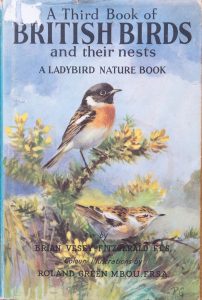
Times have changed:

“You must know the House-Sparrow very well already, for it is a very common bird both in town and country, and is never found far away from buildings and cultivated land.”
How wrong can you be? You just need to check out Facebook bird groups every day to find someone asking what sort of bird is shown in their blurry garden photo to realise many people don’t recognise the House Sparrow.
According to the RSPB:
“House sparrow numbers were not monitored adequately before the mid-1970s. Since then, numbers in rural England have nearly halved while numbers in towns and cities have declined by 60 per cent. Because of these large population declines, the house sparrow is now red-listed as a species of high conservation concern.”
House Sparrows must have been very rare birds before humans and houses. They became super-abundant as colonial travel spread them throughout the world. Now they’re at risk from changes in agriculture and building. The human population has doubled since the 1970s. That’s putting immense pressure on the natural world.
Here’s a female glimpsed through the fresh leaves of a Hawthorn in May:

And here’s a beautiful male.
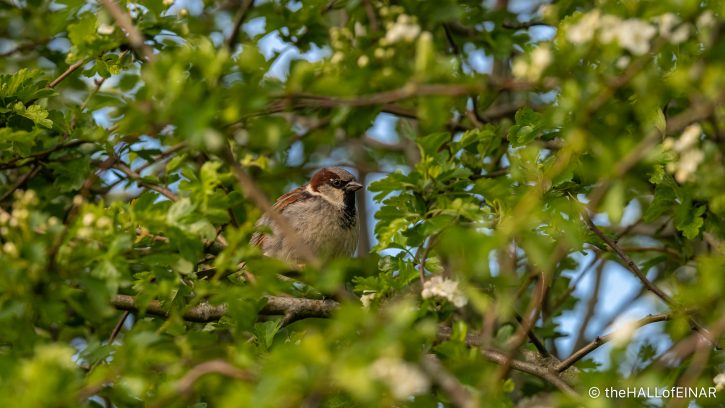
This pair are nesting below the roof of a metal industrial building.
My view is that House Sparrows are a gateway drug to hardcore conservation:
Here are my childhood nature notebooks:
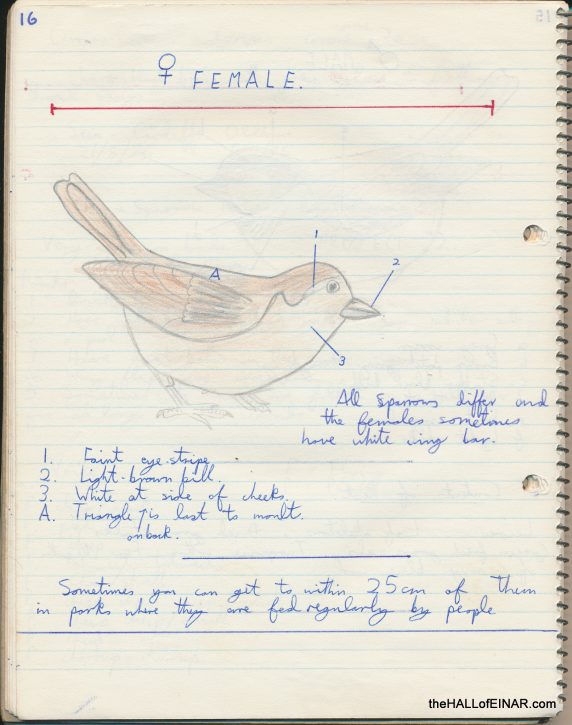
The look on their faces still makes me smile.

And here’s my attempt at art as a twelve year old, with the concrete path down the back yard of our Oldham terrace and a beautiful dandelion:
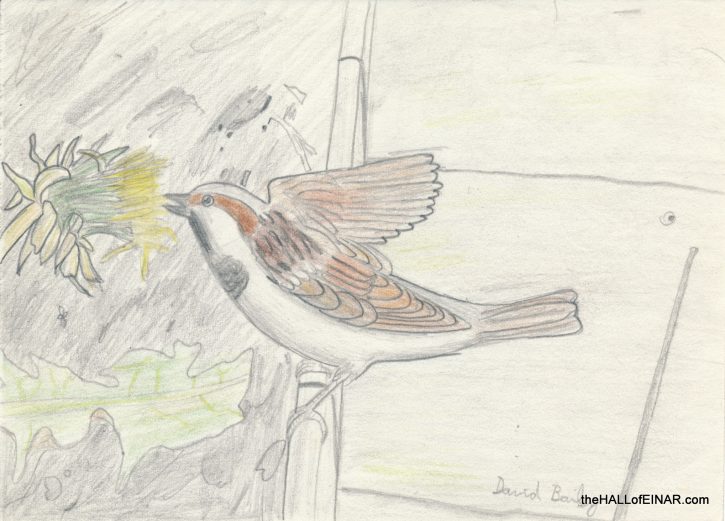
We need other 12 year olds to be similarly inspired if the natural world is to have a chance of prospering in the next fifty years.
More House Sparrows
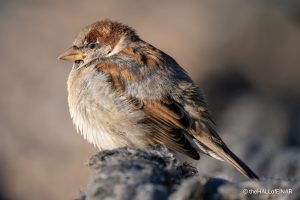 Sparrow I love seeing Sparrows. They were my gateway drug into wildlife conservation. They were almost the only bird which visited… read more
Sparrow I love seeing Sparrows. They were my gateway drug into wildlife conservation. They were almost the only bird which visited… read more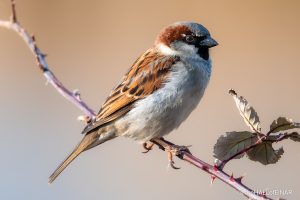 Spug I was surprised to find that House Sparrows have other, local, common names. Then I was shocked that so many… read more
Spug I was surprised to find that House Sparrows have other, local, common names. Then I was shocked that so many… read more Outbuilding Sparrows There's a male House Sparrow chirping insistently on a bare patch of ground. He's fluffed up his belly and is… read more
Outbuilding Sparrows There's a male House Sparrow chirping insistently on a bare patch of ground. He's fluffed up his belly and is… read more Cafe culture I'm at Portland in Dorset with my friend Mark when he offers to buy us ice creams. I'm hardly likely… read more
Cafe culture I'm at Portland in Dorset with my friend Mark when he offers to buy us ice creams. I'm hardly likely… read more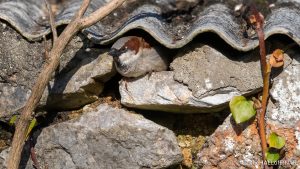 Home Sparrows House sparrows have accompanied human domestication. They've followed our agricultural practices. They've lived in our homes and they've eaten our… read more
Home Sparrows House sparrows have accompanied human domestication. They've followed our agricultural practices. They've lived in our homes and they've eaten our… read more Domesticus The chirping of flocks of House Sparrows is a joyous thing. They're noisy, gregarious creatures and full of the joys… read more
Domesticus The chirping of flocks of House Sparrows is a joyous thing. They're noisy, gregarious creatures and full of the joys… read more House Sparrows House Sparrows are exotic. Just look at this male: They're now so unusual that people often ask what they are,… read more
House Sparrows House Sparrows are exotic. Just look at this male: They're now so unusual that people often ask what they are,… read more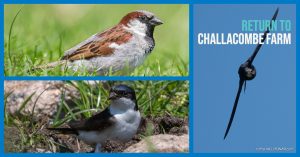 Return to Challacombe Farm I’ve been to Challacombe Farm before. It's teeming with animals for food and fun read more
Return to Challacombe Farm I’ve been to Challacombe Farm before. It's teeming with animals for food and fun read more 2019 highlights of a wilder Orkney life The turning of the year is always a great time for reflection. Celebrating the darkest day with the thought that… read more
2019 highlights of a wilder Orkney life The turning of the year is always a great time for reflection. Celebrating the darkest day with the thought that… read moreMore Ladybird Books
 The Third Ladybird Book of British Birds – #17 The Great Crested Grebe I’m currently reading the third volume of the Ladybird Book of British Birds and their nests from the 1950s. Times… read more
The Third Ladybird Book of British Birds – #17 The Great Crested Grebe I’m currently reading the third volume of the Ladybird Book of British Birds and their nests from the 1950s. Times… read more The Third Ladybird Book of British Birds – #16 The Curlew I’m currently reading the third volume of the Ladybird Book of British Birds and their nests from the 1950s. Times… read more
The Third Ladybird Book of British Birds – #16 The Curlew I’m currently reading the third volume of the Ladybird Book of British Birds and their nests from the 1950s. Times… read more The Third Ladybird Book of British Birds – #15 The Oystercatcher I’m currently reading the third volume of the Ladybird Book of British Birds and their nests from the 1950s again.… read more
The Third Ladybird Book of British Birds – #15 The Oystercatcher I’m currently reading the third volume of the Ladybird Book of British Birds and their nests from the 1950s again.… read more The Third Ladybird Book of British Birds – #14 The Stonechat I’m currently reading the third volume of the Ladybird Book of British Birds and their nests from the 1950s. Times… read more
The Third Ladybird Book of British Birds – #14 The Stonechat I’m currently reading the third volume of the Ladybird Book of British Birds and their nests from the 1950s. Times… read more The Third Ladybird Book of British Birds – #13 The Rook I’m currently reading the third volume of the Ladybird Book of British Birds and their nests from the 1950s. Times… read more
The Third Ladybird Book of British Birds – #13 The Rook I’m currently reading the third volume of the Ladybird Book of British Birds and their nests from the 1950s. Times… read more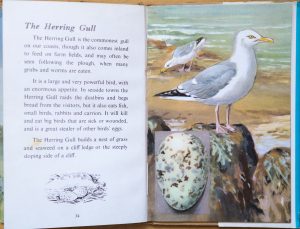 The Third Ladybird Book of British Birds – #12 The Herring Gull I’m currently reading the third volume of the Ladybird Book of British Birds and their nests from the 1950s. Times… read more
The Third Ladybird Book of British Birds – #12 The Herring Gull I’m currently reading the third volume of the Ladybird Book of British Birds and their nests from the 1950s. Times… read more The Third Ladybird Book of British Birds – #11 The Blackcap I’m currently reading the third volume of the Ladybird Book of British Birds and their nests from the 1950s. Times… read more
The Third Ladybird Book of British Birds – #11 The Blackcap I’m currently reading the third volume of the Ladybird Book of British Birds and their nests from the 1950s. Times… read more The Third Ladybird Book of British Birds – #10 The Tree Sparrow I’m currently reading the third volume of the Ladybird Book of British Birds and their nests from the 1950s. Times… read more
The Third Ladybird Book of British Birds – #10 The Tree Sparrow I’m currently reading the third volume of the Ladybird Book of British Birds and their nests from the 1950s. Times… read more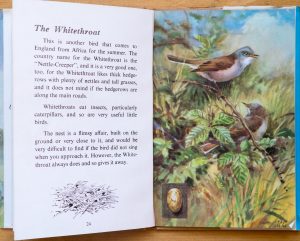 The Third Ladybird Book of British Birds – #8 The Whitethroat I’m currently reading the third volume of the Ladybird Book of British Birds and their nests from the 1950s. Times… read more
The Third Ladybird Book of British Birds – #8 The Whitethroat I’m currently reading the third volume of the Ladybird Book of British Birds and their nests from the 1950s. Times… read more